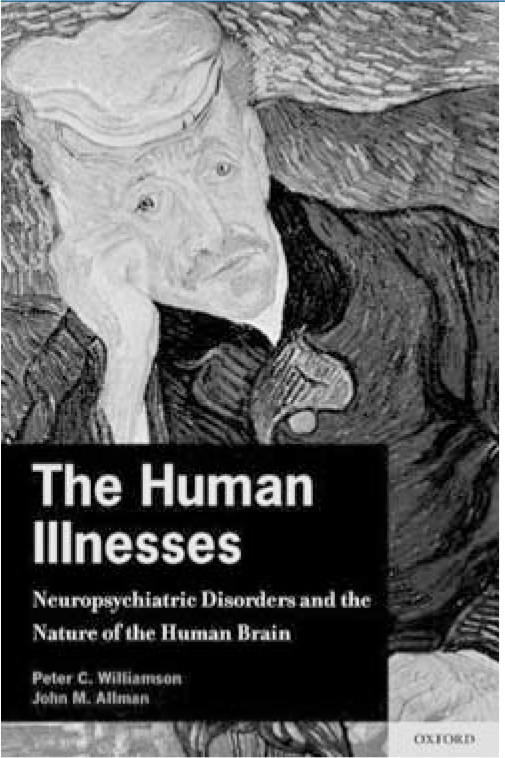
This publication is born from a collaboration between a neuropsychiatrist and evolutionary biologist. It starts from the premise that naturally occurring animal equivalents of some psychiatric disorders such as depression and simple phobia can be found in many species, but more complex disorders such as schizophrenia, autism and frontotemporal dementias appear as uniquely human illnesses. Their thesis is that the neuronal pathways that underlie these neuropsychiatric conditions mirror unique human capabilities. Determining how these capabilities are represented in the human brain may not only tell us about what makes the human brain human but also provide a framework for understanding neuropsychiatric disorders in a new way.
The book has a broad scope, covering some background neuroscience and details of a number of specific illnesses, including schizophrenia, bipolar disorders, autism, attention-deficit hyperactivity disorder and temporal dementia, and then speaking directly to the nature of some potentially unique human neural systems such as self-monitoring, language systems and systems for effective processing and social integration. It closes striving to draw these strands together to ask why humans experience these disorders and looking to the future in terms of implications.
The authors themselves acknowledge that the task of describing such disorders, with a diverse and complicated literature, is a daunting one and it would be beyond their expertise to be comprehensive in all the fields touched upon. The writing itself has a rather dry, and for my taste, rather sterile tone but it is clear and it is able to focus on an argument and follow its thread. It also manages to engage in reasonably fine detail, for example the potential role of HAR1F in regulating cortical development or the FOXP2 gene potentially underpinning human developmental language abnormalities.
The problem with this book though is that it falls between two stools. The ideas presented are not in any way new, only attractively arranged and brought together, and I suspect it lacks the depth of understanding to satisfy the expert, yet is perhaps overly rich in information for the student. The appropriate target is perhaps the clinician with a casual interest; still, it is a little too dry to be a ‘bedtime book’, compared with for example, Zeman’s Consciousness: A User’s Guide (Yale University Press, 2002). In some ways this lack of an obvious home is a disappointment as it is a book that has much to offer. This conundrum does to a certain extent beg the question of what is the purpose of a textbook in modern medicine. Although they still work admirably as a distillation of expert knowledge for those in training, the role of the monograph as an exploration of ideas is less certain. One hopes they can still find readership, but with the ease of access provided by the digital era one fears this may not be the case.



eLetters
No eLetters have been published for this article.